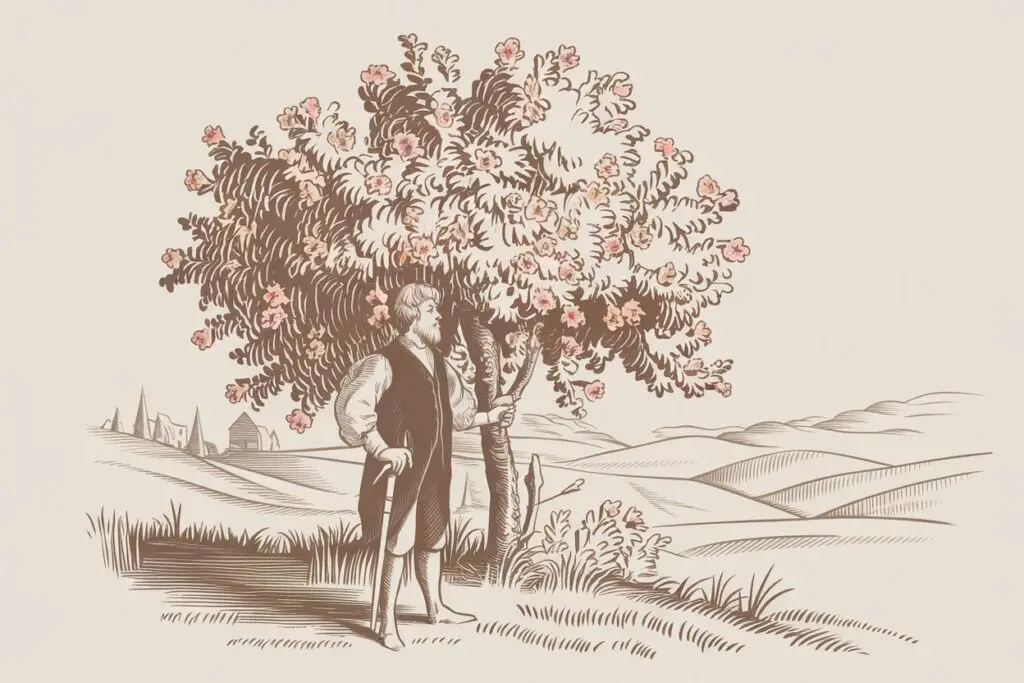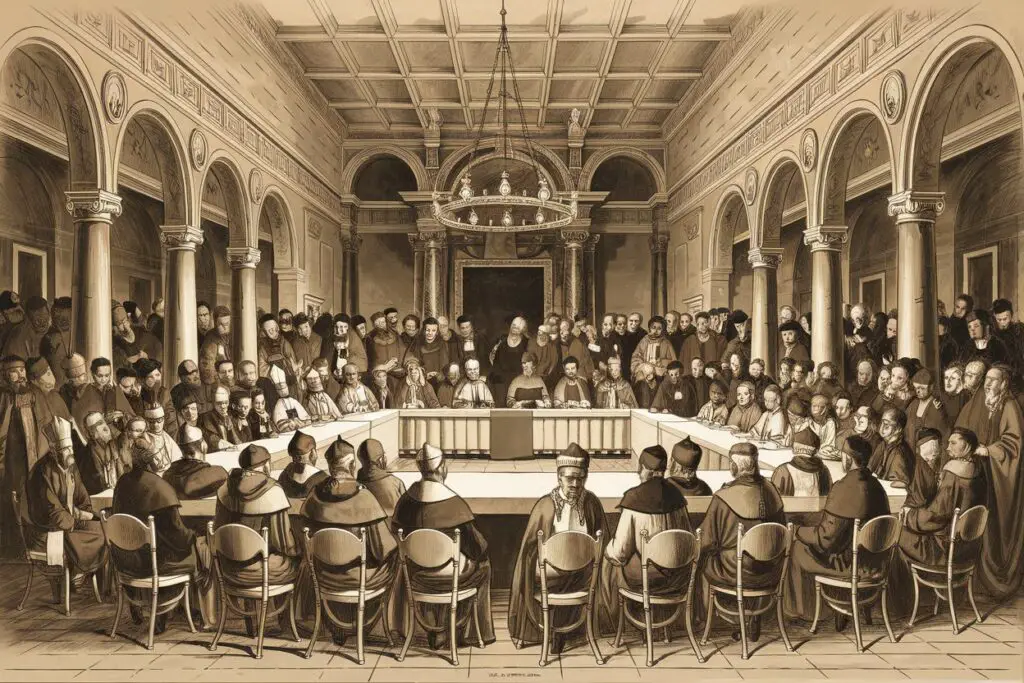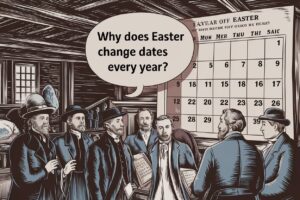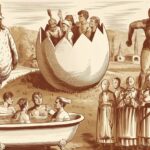Easter’s Connection to the Spring Equinox and Full Moon
Every spring, just as daffodils bloom and daylight stretches longer, a familiar question resurfaces: why does Easter hop around the calendar? One year it’s in March, the next it’s deep into April. The answer lies not in modern scheduling whims but in an ancient formula grounded in celestial rhythms—namely, the spring equinox and the full moon.
Easter is celebrated on the first Sunday following the Paschal Full Moon, a calculated date that approximates the first full moon after the vernal equinox. But here’s the twist: the Church doesn’t use the actual astronomical equinox or full moon. Instead, since the Council of Nicaea in 325 AD, the equinox has been fixed to March 21, and the full moon is determined by ecclesiastical tables based on a 19-year Metonic cycle—a system where lunar phases repeat on the same calendar dates every 19 years.

This approach was designed to align Easter with Passover, which also follows a lunar calendar and commemorates the Exodus—a pivotal moment in Jewish history that early Christians saw as symbolically connected to Christ’s resurrection. The term “Paschal,” derived from the Hebrew word “Pesach” (Passover), reflects this shared heritage.
So, if the Paschal Full Moon lands on a Saturday, Easter is the very next day. But if it falls on a Sunday, then Easter gets bumped to the following week. This explains why Easter can land anywhere between March 22 and April 25 in the Gregorian calendar. It’s a cosmic choreography—part lunar logic, part ecclesiastical math—that ensures Easter always follows a full moon and always arrives on a Sunday.
Oddly enough, this calculated system can even lead to “paradoxical” Easters, where astronomical and ecclesiastical dates diverge. But the goal remains the same: to preserve a unified celebration of Christianity’s most sacred day, anchored in the rhythms of both scripture and sky.
The Council of Nicaea and the Formula for Easter’s Date
The date of Easter wasn’t always the liturgical puzzle it is today. In fact, before the 4th century, early Christian communities across the Roman Empire celebrated the resurrection of Christ on wildly different dates—some aligning it with Passover, others choosing the nearest Sunday. This patchwork of observances created theological confusion and practical chaos. So in 325 AD, Emperor Constantine convened the First Council of Nicaea, aiming to unify Christian doctrine—and, among other things, fix the date of Easter once and for all.
The Council’s solution? Easter would be celebrated on the first Sunday after the first full moon occurring on or after the vernal equinox, which they fixed as March 21 on the Julian calendar. This wasn’t just about calendar mechanics—it was also a strategic move to distinguish Christianity from Judaism, while still preserving Easter’s symbolic link to Passover. The “Paschal Full Moon,” as it came to be known, was a calculated (not astronomical) moon phase, designed to ensure consistency across regions, even when actual lunar cycles varied.
But here’s where things get tricky. The Julian calendar, used at Nicaea, gradually drifted out of sync with the solar year. By the 16th century, the Catholic Church introduced the Gregorian calendar to correct this drift—shifting the equinox and, by extension, the date of Easter. Western churches adopted the reform; Eastern Orthodox churches did not. As a result, the same foundational formula now produces different Easter dates depending on which calendar—Julian or Gregorian—you’re using.
So while the Council of Nicaea didn’t end the Easter debate, it did establish a lasting framework: Easter is a movable feast, tethered to the rhythms of the moon and the promise of spring. The fact that this 4th-century compromise still guides global observance today is a testament to its enduring theological and astronomical ambition.
Why Easter Is a Movable Feast in the Christian Calendar
Easter is one of Christianity’s most sacred celebrations—yet unlike Christmas, which reliably shows up on December 25, Easter refuses to stick to a predictable schedule. One year it’s in late March, the next it might show up in mid-April. This elusive behavior has earned it the title of a “movable feast,” a term that might sound poetic but is rooted in centuries of calendrical complexity and theological debate. So, why does this holiest of Sundays keep shifting around the calendar?
The answer lies in a fascinating intersection of astronomy, religious tradition, and historical compromise. According to the formula set by the First Council of Nicaea in 325 AD, Easter falls on the first Sunday after the Paschal Full Moon following the vernal equinox—except, here’s the twist—the Church defines that equinox as March 21, regardless of actual astronomical timing. This rule was designed to maintain a symbolic link with the Jewish Passover, which is calculated according to the lunar calendar and commemorates the Exodus from Egypt. The early Christian community originally celebrated Easter in close proximity to Passover, honoring the Gospel timeline of Jesus’ crucifixion and resurrection.

Because the lunar cycle lasts about 29.5 days and the solar calendar follows a 365-day rhythm, Easter can land anywhere between March 22 and April 25. This 35-day window is further complicated by the Church’s use of ecclesiastical full moons—pre-calculated moon phases that don’t always match the sky’s actual behavior. As a result, Easter’s date is not just a matter of looking up at the night sky but involves modular arithmetic, epacts, and the 19-year Metonic cycle—a system ancient astronomers used to reconcile lunar and solar years.
That’s not even the end of it. Western churches (Catholic and Protestant) use the Gregorian calendar introduced in 1582, while Eastern Orthodox churches still rely on the older Julian calendar, leading to different Easter dates in many years. For example, in 2025, Western Easter will be celebrated on April 20, while Eastern Orthodox Easter will fall on April 27. These calendar differences reflect deeper historical and theological divides that still echo into the present.
So yes, Easter is a movable feast—but behind its wandering date lies a rich tapestry of history, astronomy, and the enduring effort to unite faith with the rhythms of the cosmos.
How the Paschal Full Moon Determines the Holiday
Every spring, Easter seems to sneak around the calendar like a wandering guest—sometimes arriving in March, other times lingering into late April. The reason for this annual shift lies in a centuries-old formula centered around a celestial event: the Paschal Full Moon. But here’s the twist—it’s not the actual full moon you’d see if you looked up at the night sky. Instead, it’s a calculated, ecclesiastical approximation rooted in ancient lunar cycles and theological tradition.
The Paschal Full Moon is defined as the first full moon that occurs on or after March 21, the Church’s fixed date for the spring equinox—regardless of when the actual equinox occurs astronomically. Once that moon is identified, Easter is celebrated on the following Sunday. This method, established at the Council of Nicaea in 325 AD, was designed to sever Easter’s dependence on the variable Hebrew calendar while preserving its symbolic link to Passover. In fact, the word “Paschal” itself comes from the Hebrew “Pesach,” meaning Passover, reinforcing this deep historical connection.
Because the Paschal Full Moon can fall anywhere from March 21 to April 18, Easter Sunday may occur as early as March 22 or as late as April 25. If the Paschal Full Moon lands on a Sunday, Easter is bumped to the next one—adding yet another wrinkle to the calendar. The Church’s calculation uses the 19-year Metonic cycle, a method dating back to ancient Babylonian astronomy, which aligns lunar months with solar years. This cycle, combined with a set of ecclesiastical rules, ensures that the “full moon” used for Easter’s timing is consistent across years, even if it doesn’t match what astronomers might observe.
So while it might feel arbitrary when Easter hops around the calendar, the logic behind it is anything but. It’s a delicate balancing act between lunar tradition, solar precision, and theological symbolism—one that’s been fine-tuned for nearly 1,700 years.
Differences Between Western and Eastern Church Calculations
If you’ve ever wondered why sometimes Easter seems to arrive weeks apart depending on where you are in the Christian world, you’re not imagining things—it’s a centuries-old calendar conflict. The split between Western and Eastern Christianity, formalized in the Great Schism of 1054, left more than just theological rifts; it also created divergent methods for calculating the holiest day in the Christian calendar. At the heart of the issue are two competing calendars: the Gregorian and the Julian.
The Western Church—comprising Roman Catholics and most Protestants—follows the Gregorian calendar, introduced by Pope Gregory XIII in 1582 to correct inaccuracies in the Julian calendar’s solar year. For these churches, Easter falls on the first Sunday after the Paschal Full Moon, defined as the full moon on or after March 21, the fixed date of the ecclesiastical spring equinox. This method, known as the computus, keeps Easter between March 22 and April 25 in the Gregorian system.
Meanwhile, the Eastern Orthodox Church sticks with the older Julian calendar, which currently lags 13 days behind its Gregorian counterpart. Though it uses a similar rule—Easter is the first Sunday after the Paschal Full Moon following March 21—the Julian calendar’s lag often pushes Orthodox Easter one to five weeks later. But that’s not the only difference. Eastern calculations also require that Easter occur after Jewish Passover, preserving the chronological order of the Passion narrative—a rule not strictly followed in the West.
The result? A calendar tug-of-war that means Easter Sunday can fall anywhere from April 4 to May 8 for Orthodox Christians, while Western churches celebrate it between March 22 and April 25. In some years—like 2017, 2025, and 2034—the two traditions align, but more often, they don’t. And while there have been proposals to unify the date using modern astronomical data, no consensus has been reached. For now, the dual Easters remain a vivid reminder of Christianity’s shared history—and its enduring divisions.







